New concrete blends, nanomaterials, new polymers, macrocells, biomaterials, improved aluminum manufacturing processes: materials science is an exciting field that draws on the ingenuity of chemical and materials engineering researchers who are characterizing and synthesizing molecules in order to assemble them and create composite materials with specific properties for industrial and medical applications. Our professors in chemical and civil engineering test new materials, alloys, and structures by performing physiochemical and mechanical tests to optimize performance and lifespan.
Explore materials science research
The faces of materials science research
Fluid dynamics
Fluid dynamics precisely describes the movement of fluid particles (liquids and gases) in relation to the forces involved, such as velocity, viscosity, density, pressure, and temperature. Fluid dynamics and its subdisciplines such as hydraulics and hydrodynamics have many applications, notably in weather forecasting and aeronautics. They also play an important role in industrial applications such as pulp and paper, water treatment plants, and naval architecture.
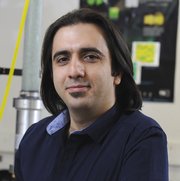
Seyed-Mohammad Taghavi, professeur titulaire, Department of Chemical Engineering
Member of the Aluminum Research Centre (REGAL) and the Centre for Advanced Materials Research (CERMA)
In his laboratory Professor Taghavi studies the behaviour of complex fluids using modelling and analytical and experimental techniques to solve industrial problems. One of his research projects aims to better understand the flow process of cement and mud, two non-Newtonian fluids used in Cementing is the process of pumping cement along a casing to displace mud produced during drilling. operations when geothermal wells are drilled. This research will generate critical knowledge in the field of fluid displacement.
Geomaterials
Geomaterials are situated at the crossroads of earth sciences, environmental science, physics, and chemistry. There are two types: natural geomaterials (rocks, soil, etc.) and artificial geomaterials (concrete, glass, ceramics, etc.). Research in the field has gained fresh impetus recently, with scientists examining the properties of geomaterials, including the structure-property relationship and conditions of formation and evolution, conducting experiments using high temperatures and various pressure levels, and investigating the specific properties of mineral surfaces.
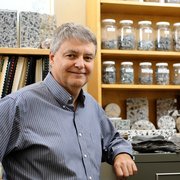
Benoit Fournier, professeur titulaire, Department of Geology and Geological Engineering
Director of the Research Centre on Concrete Infrastructures (CRIB)
Professor Fournier specializes in several aspects of An aggregate is an inert material like sand, gravel, or crushed stone that is used as a ingredient in mortars or concretes. technology. For example, he investigates recycling and sustainable development with regard to cement additives, industrial waste, and aggregates, in addition to the durability of concrete, which includes alkali-aggregate reactions.
Biomedical engineering
A number of Faculty members design materials to repair, replace, or regenerate tissues, organs, and systems in the human body. These functional materials are either synthetic, hybrid, or entirely biological and some can be used for diagnostic and therapeutic purposes in addition to tissue and organ regeneration.
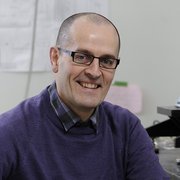
Gaétan Laroche, professeur titulaire, Department of Mineral, Metallurgical, and Materials Engineering
Director of the Centre for Advanced Material Research (CERMA)
Professor Laroche’s work deals with interactions between cells and the surfaces of materials and the development of biological applications for these interactions. In particular, he is working on modifying the surfaces of vascular and orthopedic biomedical materials to ensure biocompatibility. He is renowned for his contributions regarding the use of gaseous A plasma is an ionized gas containing free electrons that are not attached to an atom or molecule. Plasma is highly conductive due to the mobility of its charged particles. in modifying surfaces.
Sustainable infrastructure management
This field of research, which is a subdiscipline of civil engineering, involves modelling and predicting the behaviour of civil engineering structures. Researchers examine a variety of factors (mechanical, thermal, hydraulic, soil, and structural) related to complex actions such as soil movement caused by thermal or hydric strain.
What I like about the Faculty of Sciences and Engineering is that it’s like a big family—everyone respects one another and collaboration is encouraged. Despite the fact that, whether we like it or not, many of us are in competition with one another, people always come first.
Jean-Rémi Pouliot, Ph.D. student in Chemistry supervised by Department of Chemistry Professor Mario Leclerc
Graduate studies
Make the leap to graduate studies
Explore our fields of study
Synthetic and natural macromolecules
A number of researchers are involved in characterizing naturally occurring macromolecules (e.g., silk and proteins) using spectroscopic methods such as infrared and magnetic resonance. Some scientists are designing custom biofilms, while others are working on synthesizing and characterizing new polymers. Still more are studying the possibility of using cellulose in composite materials to help the plastics industry manufacture greener materials.
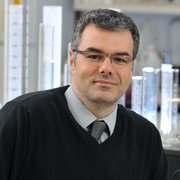
Jean-François Morin, professeur titulaire, Department of Chemistry
Directeur de la division matériaux de l'Institut de chimie du Canada
Professor Morin is synthesizing and optically and electrochemically characterizing new π-conjugated materials, including semiconductors and polymers, have optical and electronic properties that are useful in microelectronics and energy production. based on polycyclic aromatic compounds to develop organic semiconductors for use in electronic applications, including field effect transistors and plastic solar cells.
Innovative materials and products
The search for better-performing materials has led to Composite materials are composed of at least two immiscible components, a reinforcement and a matrix, which have complementary properties. Examples include carbon fibre, reinforced concrete, and pressed wood., which are less dense than metals and have a much longer lifespan. Their mechanical properties make them the materials of the future, but scientists are striving to overcome obstacles such as high production costs and limitations on recyclability.
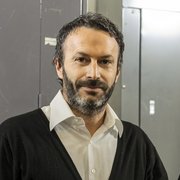
Luca Sorelli, professeur titulaire, Department of Civil and Water Engineering
Member of the Research Centre on Concrete Infrastructure (CRIB)
Luca Sorelli studies the microstructural and physicochemical properties of new materials in his lab L(CM)2M. It is the only lab in the province of Québec that can identify the micro and nano structures of composites and combine that information with statistics drawn from Nanoindentation is a mechanical technique for characterizing materials that is used on thin films and micro-objects. and chemical tests carried out in a controlled environment.
Nanomaterials
A number of researchers work on synthesizing and characterizing innovative nanomaterials created using foundamental knowledge in nanoscience. Nanomaterials can be built for and tailored to specific industrial applications through collaboration between research groups that work on molecular architecture and advanced characterization.

Anna Ritcey, professeure titulaire, Department of Chemistry
Member of the Centre for Advanced Materials Research (CERMA) and Centre québécois sur les matériaux fonctionnels (CQMF)
Professor Ritcey’s research involves synthesizing and characterizing functional luminescent, magnetic, and metallic nanoparticles. She develops methods for nanoparticle synthesis and self-assembly in order to create new molecular and nanomaterial structures at various hierarchical levels. Properties of materials made from nanoparticles depend not only on the nature of the constituent particles, but also the way they are organized.
Aluminum production
Researchers working on aluminum are looking for ways to increase energy efficiency in processing and thus reduce greenhouse gas emissions during production and searching for ways to use waste and recycled materials. They are also working to increase quality and improve the performance of alloys produced by secondary and tertiary processing and to develop new materials and transformation processes.
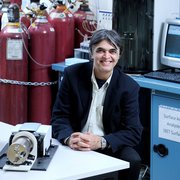
Houshang Darvishi-Alamdari, professeur titulaire, Department of Mineral, Metallurgical, and Materials Engineering
Director of the Aluminum Research Centre (REGAL)
Professor Darvishi-Alamdari has close ties with the Aluminum Research Centre (REGAL), where he is responsible for research on waste management and the quality of raw materials. He works to improve manufacturing techniques and specifications for carbon anodes in order to improve the electrical efficiency and chemical reactivity of carbon electrodes.
I think passion is paramount for a university professor. Nothing meaningful can be accomplished without the inner drive to get things done.
Serge Kaliaguine, professor, Department of Chemical Engineering specializing in industrial catalysts and catalytic processes
